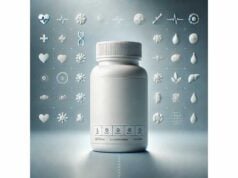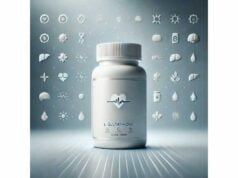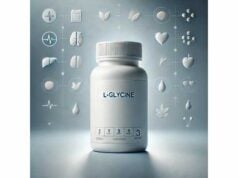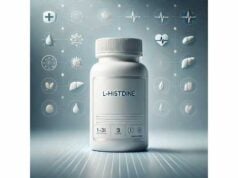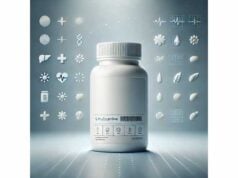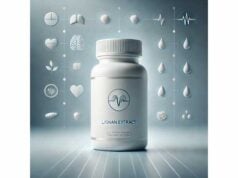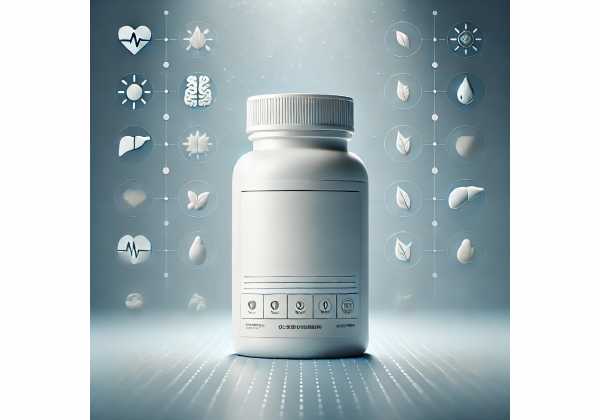
Lignoceric acid (also called tetracosanoic acid or C24:0) is a very long-chain saturated fatty acid that shows up in small amounts in many natural fats and in the backbone of specific skin and nerve lipids. While it is not a mainstream dietary supplement, interest in lignoceric acid has grown because of its roles in skin barrier structure (as part of ceramides), nerve cell membranes (sphingolipids), and its measurement as a biomarker in certain rare metabolic disorders. This guide explains what lignoceric acid is, how it behaves in the body, where you encounter it (foods, skincare, specialty formulations), what to know about dosing and safety, and where the evidence stands today. If you are considering products that mention “C24 ceramides,” “very long-chain fatty acids,” or “lignoceric acid,” this article will help you understand the practical implications—what it can and can’t do—so you can make informed choices.
Essential Insights
- Supports skin barrier integrity as the C24 fatty acid used to build long-chain ceramides in the stratum corneum.
- Occurs naturally in trace amounts in foods (e.g., peanut oil) and in human sphingolipids; not an essential nutrient with a defined intake requirement.
- Typical topical use is via ceramide-containing moisturizers; oral supplemental dosing is not established.
- Individuals with peroxisomal disorders (e.g., X-linked adrenoleukodystrophy) should avoid supplemental very long-chain fatty acids without specialist guidance.
Table of Contents
- What is lignoceric acid?
- Does it do anything in humans?
- Practical uses and forms
- How to take or apply it
- Safety, risks, and who should avoid
- Evidence check: what we know
What is lignoceric acid?
Lignoceric acid is a saturated fatty acid with 24 carbons (C24:0). It belongs to the family of very long-chain fatty acids (VLCFAs), which generally start at 22 carbons and above. Most dietary fats you hear about—palmitic (C16:0), stearic (C18:0), oleic (C18:1), linoleic (C18:2)—are long-chain rather than very long-chain. C24:0 is less common and behaves differently in membranes and metabolism because of its extra length.
Where it occurs:
- Natural fats and oils: Many edible oils contain trace amounts. Peanut oil is the textbook example, where lignoceric acid typically appears at roughly 1–2% of total fatty acids. Because a tablespoon of oil weighs about 14 g, that translates to an estimated 140–280 mg of lignoceric acid per tablespoon in peanut oil (values vary by cultivar and processing).
- Sphingolipids and ceramides: In humans, C24:0 (and the monounsaturated C24:1) are preferred acyl chains for sphingolipids. These lipids are abundant in myelin (the insulating sheath around nerves) and in the stratum corneum (the outermost layer of skin) as ceramides that help create a strong water-retaining barrier.
- Industrial and cosmetic uses: Lignoceric acid and its derivatives can be found in lubricants, waxes, and select cosmetic raw materials, often valued for their high melting point and stability.
How the body makes it:
- Humans can elongate shorter saturated fatty acids (like stearic or arachidic acid) to C24:0 using a set of enzymes called ELOVLs (elongation of very long-chain fatty acids). ELOVL1 is the key enzyme for producing C24 acyl-CoAs that are then used to build C24-ceramides and related sphingolipids.
- Because C24 is long and packs tightly, membranes containing C24-rich sphingolipids are more ordered. In skin, pairing C24 fatty acids with specialized sphingoid bases and omega-hydroxy linkages creates the lamellar sheets that minimize transepidermal water loss.
Why it matters:
- Even though you don’t “need” to supplement lignoceric acid, your tissues rely on C24 chains to build functional membranes. When C24 synthesis or handling goes wrong (for example, in rare peroxisomal disorders), VLCFAs can accumulate or be mis-distributed, which has clinical consequences.
- In skincare, ceramide products aiming to mimic the natural distribution of long acyl chains (including C24) may support a more resilient barrier, particularly in dry or atopic skin.
Does it do anything in humans?
It’s helpful to distinguish direct effects of lignoceric acid as an isolated nutrient from effects of lipids that contain C24 chains (like ceramides). In practice, most of the meaningful biology comes from the latter.
Key roles and mechanisms:
- Skin barrier structure: C24-containing ceramides interlock like long boards in a fence, allowing lipid lamellae to pack densely. This packing reduces water loss and keeps irritants out. Research across human and animal studies shows that when the skin’s ceramide profile shifts toward shorter chains and away from ≥C24, the barrier weakens, leading to dryness, sensitivity, and higher transepidermal water loss.
- Nervous system membrane composition: Myelin and neuronal membranes are rich in sphingolipids; C24 chains are common here as well. The presence of longer chains can influence membrane microdomains (sometimes called lipid rafts) and the behavior of signaling proteins.
- Metabolic handling: VLCFAs like C24:0 are broken down primarily in peroxisomes. In certain genetic conditions (e.g., X-linked adrenoleukodystrophy), transport of VLCFAs into peroxisomes is impaired. These disorders are diagnosed and monitored in part by measuring VLCFAs in blood. This is a clinical context—not a wellness “use”—but it underscores why indiscriminate intake of VLCFAs is not advisable for affected individuals.
- Inflammation and immune crosstalk (skin): Cytokines implicated in atopic dermatitis can alter ELOVL expression, skewing ceramide chain length toward shorter species. Restoring long-chain and very long-chain ceramides (including C24) in topical formulations helps counteract this shift, supporting barrier recovery.
What lignoceric acid is not:
- It’s not a proven standalone oral supplement for skin, brain, or heart health. There are no robust randomized trials showing that ingesting isolated C24:0 provides benefits in otherwise healthy people.
- It’s not an essential fatty acid in the dietary sense; your body can make it from shorter saturated precursors.
Bottom line: lignoceric acid matters because your body uses it as building material—especially for long-chain ceramides in skin and sphingolipids in nerves. That’s why it appears in research and clinical diagnostics, and why topical systems that mimic native C24-rich ceramides can be useful for barrier support.
Practical uses and forms
Because lignoceric acid has a high melting point and specific membrane effects, you’ll see it in these contexts:
1) Skincare (topical ceramide systems)
Most consumer products don’t list “lignoceric acid” on the label. Instead, they use ceramides that naturally include long acyl chains (often C24:0 or C24:1) along with cholesterol and free fatty acids in a ratio meant to mimic healthy stratum corneum. Some advanced formulations also include omega-hydroxy ceramides and “acyl-ceramides” that are especially critical to barrier architecture. Benefits you might notice:
- Reduced dryness and scaling, improved smoothness.
- Less stinging from cleansers or actives, thanks to tighter barrier packing.
- Over weeks, a steady drop in transepidermal water loss if the routine is consistent.
2) Foods and culinary oils
Trace lignoceric acid appears naturally in oils like peanut oil. The contribution is nutritionally minor and part of the complex fatty-acid profile of the oil. From a practical perspective:
- You might ingest tens to a few hundred milligrams of lignoceric acid when eating foods fried in or dressed with peanut oil, depending on portion size and the oil’s specific composition.
- There’s no evidence that intentionally trying to “raise” dietary lignoceric acid provides health benefits in healthy individuals.
3) Specialized raw materials (industry/cosmetics)
In formulation labs, lignoceric acid or C24-rich waxes/esters can be used to tune viscosity, melting behavior, or occlusivity in sticks, balms, and conditioners. These uses are about product performance, not nutrition.
4) Research/clinical diagnostics
VLCFA measurements, which include C24:0 and C26:0 levels and related lysophospholipids, are used in clinical genetics for diagnosing and monitoring certain peroxisomal disorders. This is not a consumer application; it belongs in medical care.
What you generally won’t find:
- Capsules labeled “Lignoceric Acid 1000 mg.” This is not a standard supplement category. If you do encounter such products, they are niche and lack established dosing standards or outcome data.
Choosing a topical product wisely
- Look for ceramide-containing moisturizers that reference long-chain or “skin-identical” ceramides. Consistent daily use matters more than chasing a specific C24 percentage on the label (which most brands don’t publish).
- Favor formulas that also include cholesterol and free fatty acids, ideally in ratios close to skin’s natural composition, because barrier lipids work as a team.
How to take or apply it
Oral intake (food context, not supplementation)
- There is no recommended dietary allowance or validated “therapeutic dose” for lignoceric acid. Ordinary diets provide small amounts incidentally.
- If you wish to estimate intake from peanut oil, a rough calculation is informative: 1–2% of the oil’s fatty acids as C24:0 means ~140–280 mg per tablespoon (14 g). This is a ballpark, not a target.
- Because there’s no established benefit for deliberately increasing oral C24:0, prioritize overall diet quality rather than chasing lignoceric acid.
Topical use (the most practical route)
- When: Apply ceramide-containing moisturizers once or twice daily, especially after cleansing or bathing, when skin is still slightly damp.
- How:
- Cleanse gently; avoid very hot water and harsh surfactants.
- Pat dry (don’t rub).
- Apply a ceramide moisturizer across the target area within 3 minutes to trap water.
- For very dry or atopic-prone skin, layer a more occlusive balm at night.
- How much: A nickel-sized amount per limb area or two fingertips for the face is a usable rule of thumb; increase for large areas.
- What to look for: Consistency in use (daily for at least 2–4 weeks) usually yields improved comfort and visible smoothness.
Stacking with actives
- With retinoids or exfoliants: Apply the ceramide product after your active to buffer irritation.
- With niacinamide or glycerin: These combine well; humectants draw water while ceramide systems help lock it in.
- With occlusives: Petrolatum or wax balms can be layered on top in cold, dry climates or during flares.
Who might consider targeted topical support
- People with dry, sensitive, or atopic-prone skin; those using retinoids or undergoing procedures; occupations with frequent hand-washing; and anyone in cold, low-humidity environments.
What not to do
- Don’t assume that buying isolated “lignoceric acid” and putting it on skin will work better than a balanced ceramide-cholesterol-fatty acid system. Barrier lipids behave cooperatively; oversupplying one component may not improve outcomes.
Safety, risks, and who should avoid
General safety
- Trace dietary exposure from common foods and oils is considered safe for the general population.
- Topical ceramide-containing products are widely used and well-tolerated, including by sensitive skin. Irritation is uncommon and often relates to other ingredients (fragrance, acids) rather than the ceramides or C24 content.
Key cautions
- Peroxisomal disorders (medical): Individuals with conditions that impair very long-chain fatty acid metabolism—most notably X-linked adrenoleukodystrophy (X-ALD)—should not self-supplement with VLCFAs (including lignoceric acid). Management requires specialist care, biochemical monitoring, and genetics support.
- Allergies and sensitivities: Peanut-derived materials may concern those with severe peanut allergies, though refined peanut oil often removes most proteins. If in doubt, avoid or consult an allergist.
- Pregnancy and breastfeeding: There are no established oral supplemental dosages or benefits for lignoceric acid in these life stages. Food-level exposure is typical; avoid experimental supplementation.
Side effects and interactions
- Oral supplements: Because they are not standard and lack dosing norms, potential side effects are not well characterized. Large boluses of saturated VLCFAs are unnecessary and could, in theory, tax peroxisomal handling in predisposed individuals.
- Topical use: Rarely, contact dermatitis can occur if formulas contain sensitizers. Patch-test a new product on a small area for 24–48 hours if you have a history of reactions.
- Drug interactions: None established for food-level exposure. If you have a peroxisomal disorder or are under evaluation for one, ask your specialist before using any VLCFA-containing supplements.
Practical risk-reduction tips
- Prefer food sources and balanced skincare rather than isolated, high-dose VLCFA capsules.
- Read labels; if a product explicitly contains peanut-derived lipids and you have allergies, skip it.
- For chronic skin conditions, integrate ceramide care with gentle cleansing, humidifier use in dry seasons, and sun protection during the day.
Evidence check: what we know
Strongest areas (mechanisms and structure)
- ELOVL1 biology: The enzyme ELOVL1 generates C24 acyl-CoAs from shorter precursors and collaborates with ceramide synthases (notably CERS2) to build C24-rich sphingolipids. Cellular and animal studies show that altering ELOVL1 changes the distribution of C24 species in membranes, with downstream effects on skin barrier and neural tissues.
- Skin barrier science: Modern reviews of the stratum corneum confirm that chain length matters. Long and very long acyl chains (including C24) enable tight lamellar packing. When inflammation or genetic variants reduce the proportion of long-chain ceramides, barrier function declines; restoring them (often via topical care) improves hydration and resilience.
Moderate areas (clinical relevance by condition)
- Atopic dermatitis support (topical): While ceramide moisturizers vary, formulations that approximate the skin’s natural long-chain ceramide profile are associated with improved barrier metrics in observational and interventional studies. Exact C24 percentages per product are rarely disclosed; nevertheless, using a ceramide-cholesterol-fatty acid blend consistently is a practical, evidence-aligned step.
- Peroxisomal disorders: In medical settings, VLCFA levels—including C24:0—are used for diagnosis and monitoring. This supports the broader point: VLCFAs are biologically significant, but handling them pharmacologically requires specialist oversight.
Limited or absent areas (as a supplement)
- Oral lignoceric acid for skin, cognition, or cardiovascular outcomes: There are no high-quality randomized controlled trials demonstrating benefit. Extrapolating from membrane biology to health outcomes without clinical data is a common pitfall; avoid it here.
What to watch next
- Precision skincare: Better characterization of ceramide chain-length distributions in different skin states may refine topical formulations, potentially including tailored C24 delivery systems.
- Genetic and enzymatic modulation: Understanding how cytokines and lifestyle factors alter ELOVL expression might inform strategies to maintain healthy ceramide profiles without supplementation.
Take-home: Treat lignoceric acid as a structural building block your body already uses. For everyday health, that means focusing on skin-identical topical systems and an overall balanced diet, not chasing standalone C24 pills.
References
- Tetracosanoic Acid | C24H48O2 | CID 11197 – PubChem 2025.
- ELOVL1 production of C24 acyl-CoAs is linked to C24 sphingolipid synthesis – PMC 2010 (Mechanistic).
- Skin Lipid Barrier: Structure, Function and Metabolism – PMC 2024 (Review).
- X-Linked Adrenoleukodystrophy – GeneReviews® – NCBI Bookshelf 2023 (Guideline/Monograph).
- [Saturated fatty acids determination by GLC after TLC separation (author’s transl)] – PubMed 1975 (Analytical; reports ~1–2% lignoceric acid in peanut oil).
Disclaimer
This article is for general education only and does not replace personalized advice from your physician, pharmacist, or registered dietitian. Do not start, stop, or change any treatment or use very long-chain fatty acid supplements without guidance from a qualified healthcare professional—especially if you have, or are being evaluated for, a metabolic or genetic condition.
If you found this helpful, consider sharing it with a friend or colleague on Facebook, X (formerly Twitter), or your favorite platform, and follow us for future updates. Your support helps us continue producing careful, people-first content.

